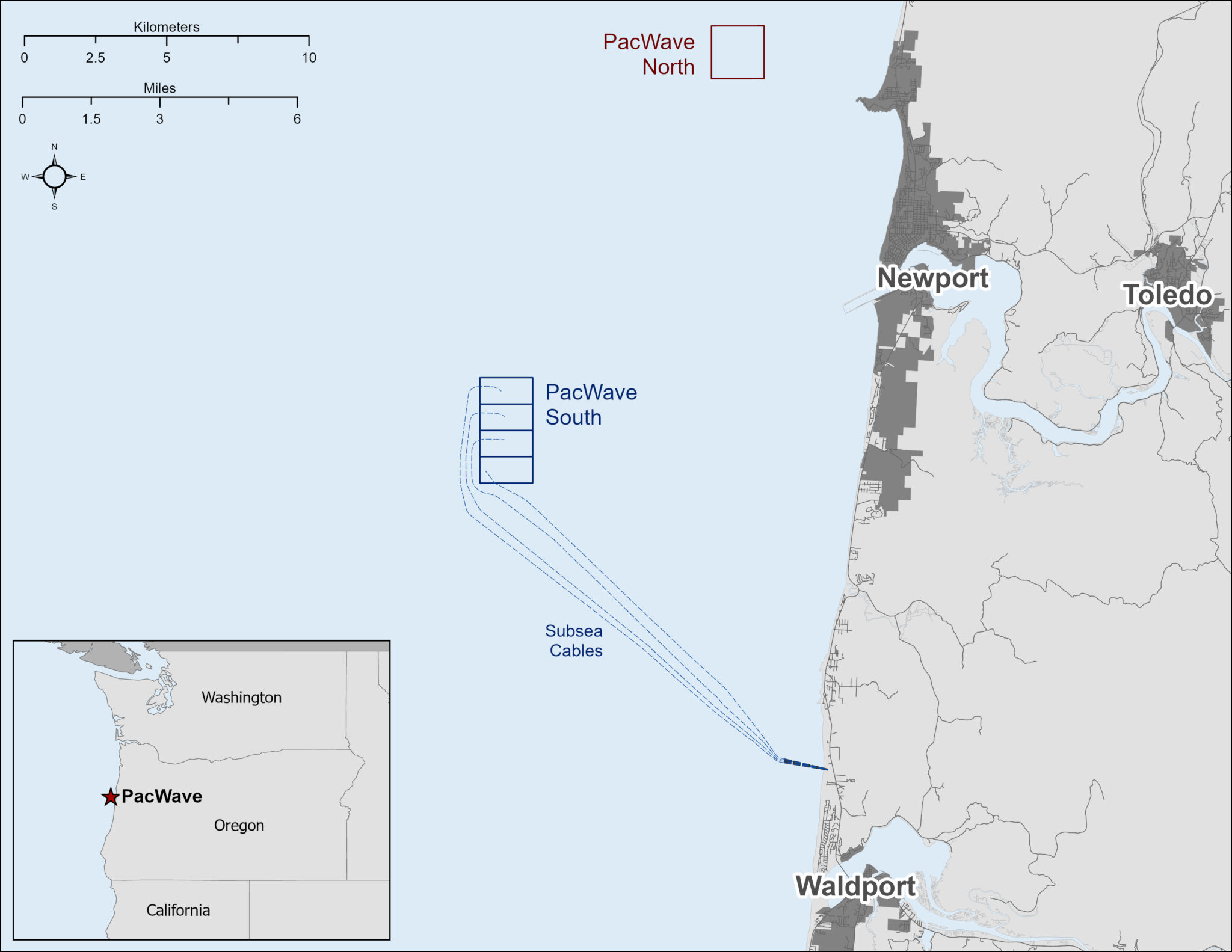CalWave is one step closer to exporting and selling wave-generated power to American homes and businesses thanks to a historic agreement between the Bonneville Power Administration (BPA) and PacWave, administered by Oregon State University (OSU).
This is a major commercial milestone for our team. While our successful 2021-22 San Diego deployment proved our xWave technology’s performance and durability, this PacWave project will be the first time CalWave provides power to customers on the U.S. main grid, marking our transition from R&D to commercial operations. This is all made possible by the new power purchase agreement (PPA) between BPA and PacWave, where our xWave is set to be deployed soon. PPAs are regular occurrences in energy markets, but this one is different: For the first time ever in the continental U.S., the electrons covered by a PPA will come from wave energy technologies.

Here are a few key pieces of the agreement:
- At this point the agreement extends for five years, from 2026 through 2030.
- Since PacWave is a wave energy test site, it will not always operate at its full rated capacity (20 megawatts). Therefore, BPA will purchase up to 20 megawatt-hours (MWh) of energy per hour from OSU.
- The flexible, market-based agreement provides a clear commercial framework for up to 20 megawatts of power.
- Central Lincoln PUD will provide the grid connection for the power generated at PacWave at its UCMF between Seal Rock and Waldport.
This is big news for CalWave. While our open-ocean deployment offshore San Diego from September 2021 to July 2022 exceeded expectations by operating 67 percent longer than planned with zero downtime and zero decline in performance, it exported the generated power to a local microgrid at the Scripps Institution of Oceanography.

And this agreement extends well beyond CalWave, too. Right now the wave energy sector is largely focused on technology development in order to reduce costs, but this PPA signals commercial demand. With a project like PacWave fully operational, the sector advances toward “bankability” and attractiveness for private sector investors, EPCs, and energy offtakers. In the coming years, the PPA can serve as a model for additional commercial projects.
The U.S. Department of Energy, Oregon State University, the Pacific Marine Energy Center, and countless others have put their hard work and expertise into the development of the PacWave test site. Now it’s up to CalWave, and other wave energy technology developers, to deploy their systems and lead America – and the world – into a new era of offshore energy.
PacWave background and specifications:
Construction started on the grid-connected PacWave site in 2021, when crews laid four power export cables from the onshore Utility Connection & Monitoring Facility (UCMF) to the offshore test site about seven miles off the central Oregon coast. Each around 12 miles long, the four cables were safely buried under the seafloor about a mile offshore and then horizontally bored to their landing site on the other side of Driftwood Beach. Each rated at five megawatts, the four cables connect to four different test berths, allowing for several different entities to test their wave energy technologies at any given time. When operating at its full capacity of 20 megawatts, the PacWave facility could power around 10,000 homes.






